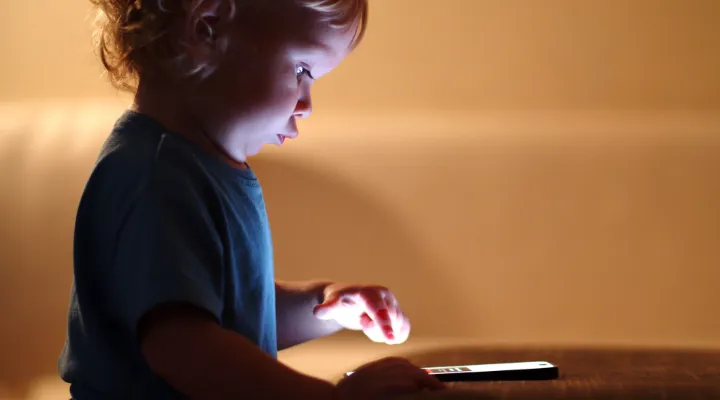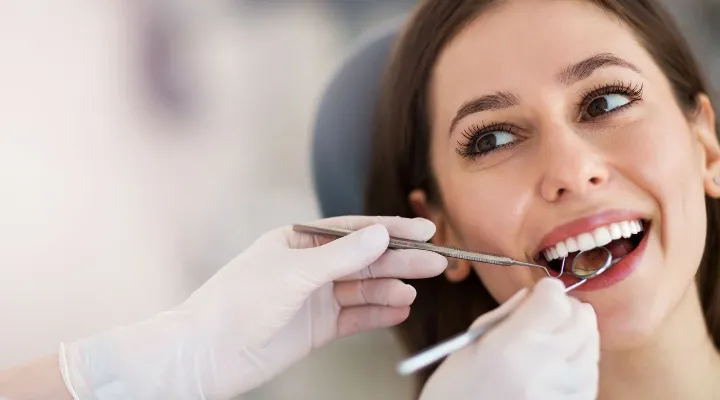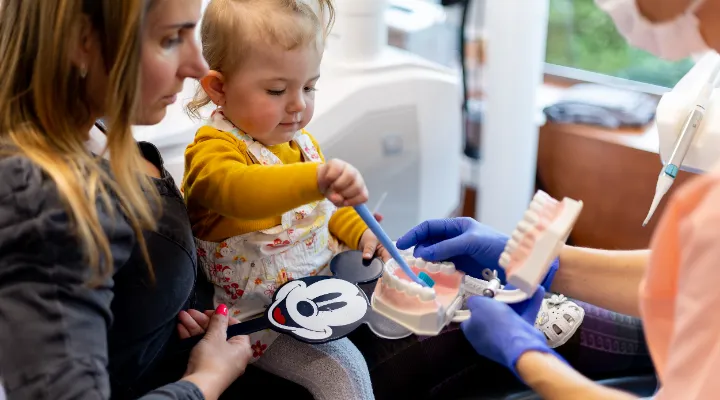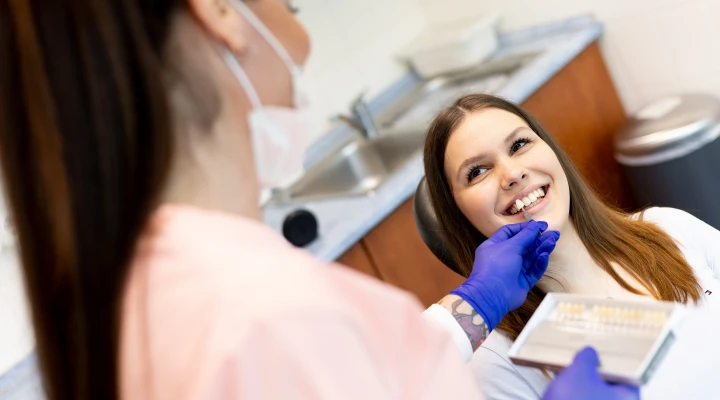This is why we advise all parents to help their children to become familiar with going to the dentist as soon as possible. If they come to us for a check-up at the age of four or five, we can also spot any potential issues in time. We win the child's trust by playfully introducing them to dental equipment and the environment so they won't find it too scary the next time.
Sometimes, parents bring their children during the transitional phase from baby teeth to adult teeth because the child's baby teeth haven’t started moving yet. If a baby tooth still doesn't fall out even long after when we would expect at that age (6-7 years old for the first two lower and upper incisors, 7-8 years for the two lower and upper external incisors, 9-11 years for the first four molars), then it is a good idea to have a panoramic X-ray to see if the child has hypodontia (a lack of new teeth), or hyperdontia (too many teeth). In the former case, the baby tooth won't fall out because there is no permanent tooth germ to kickstart the process. An extra tooth, on the other hand, can obstruct the emergence of adjacent teeth. Hypodontia most often occurs in the upper lateral incisors and the second premolar teeth, while many people's wisdom teeth also fail to develop. While most people are happy about the latter, the lack of an incisor is a serious aesthetic issue. With premolars, the baby tooth stays in place instead of the missing tooth germ. The baby tooth wears away in adult life, and replacing it can be a serious issue.
Another common problem occurs when the baby tooth doesn't want to give its space over to the permanent tooth, which then emerges either beside or behind the adult tooth. The germ of the permanent tooth fails to develop in the right place, whereas in normal cases, the pressure created by the growth of permanent teeth means the root of the baby tooth is gradually absorbed, the baby tooth becomes wobbly, and finally it is pushed out – or the children pull it out from the gums themselves – and the adult tooth becomes visible. When the baby tooth falls out, it doesn't have a root – only the crown part is left.
What can the parent do if the root of the baby tooth doesn't become absorbed, and the permanent tooth has already appeared in the gums above or next to the baby tooth, but the baby tooth hasn't moved yet?
In this case, it's a good idea to visit your dentist, who can remove the 'stuck' baby tooth, as otherwise the adult tooth will grow out at an angle due to the obstruction, and this might mean the child has to have orthodontic treatment later on. Baby teeth that stay in the gums for a long time are one of the prime causes of tooth congestion. Though nature is able to resolve any slight irregular growth as the jawbone develops, any more significant irregularities need to be corrected. It's a good idea to monitor the transition of your child's teeth so we can avoid teeth congestion, which can cause numerous serious issues related to the imbalance of the jawbone (such as joint pain and clicking, restricted mouth opening, earaches, headaches, indigestion). We recommend that you take your child for regular visits to the dentist from the age of four so we can check to see if their little teeth have any problems, or might have in the future!
D.D. Gabriella Nagy
Pediatric Dentist








